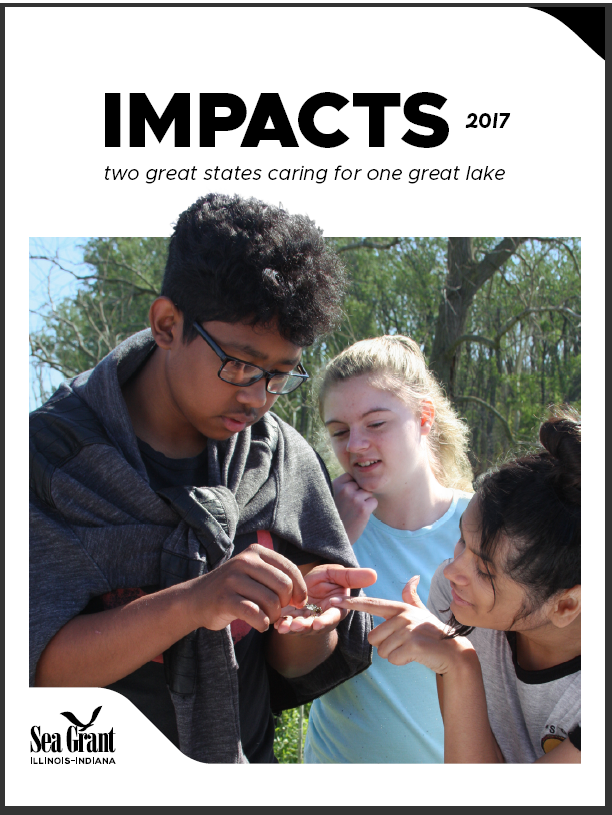
File Size: 24.64 MB
This booklet describes some of Illinois-Indiana Sea Grant’s success stories from 2017.

This booklet describes some of Illinois-Indiana Sea Grant’s success stories from 2017.
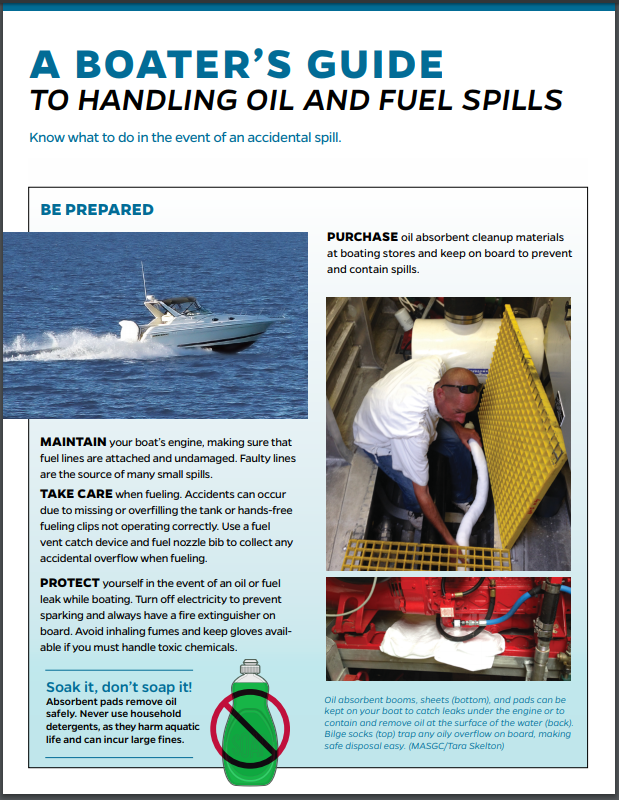
This fact sheet is for boaters to educate them on handling oil and fuel spills.
Una Guía para los Aficianados a la Navegación en español está aquí.
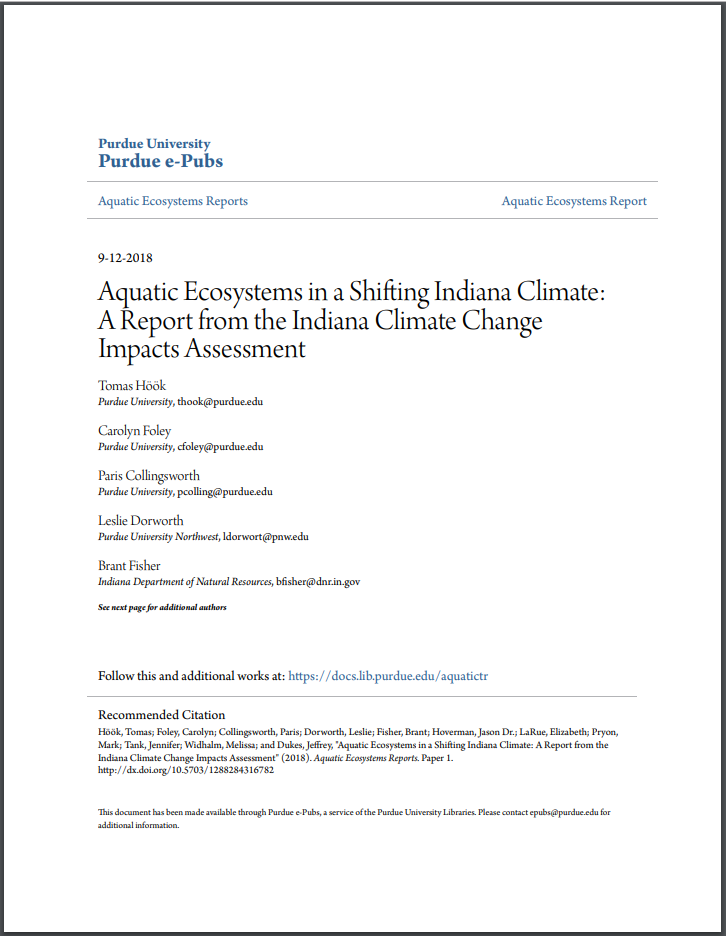
Indiana’s ecosystems will experience changes in water quantity, water temperature, ice cover, water clarity, and oxygen content as the state’s temperature and rainfall patterns shift. The plants and animals living in these aquatic ecosystems will undergo changes that will vary based on the species and the specific places they inhabit.
Part of the Indiana Climate Change Impacts Assessment (IN CCIA).
Download the report from Purdue e-Pubs. DOI: 10.5703/1288284316782
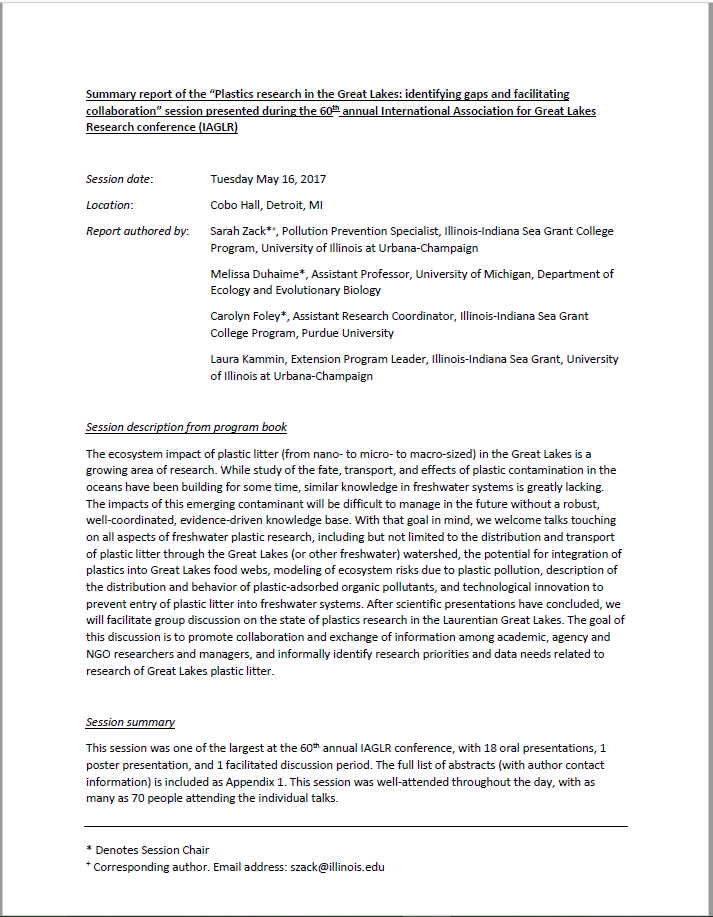
This session was one of the largest at the 60th annual IAGLR conference, with 18 oral presentations, 1 poster presentation, and 1 facilitated discussion period. The full list of abstracts (with author contact information) is included as Appendix 1. This session was well-attended throughout the day, with as many as 70 people attending the individual talks.
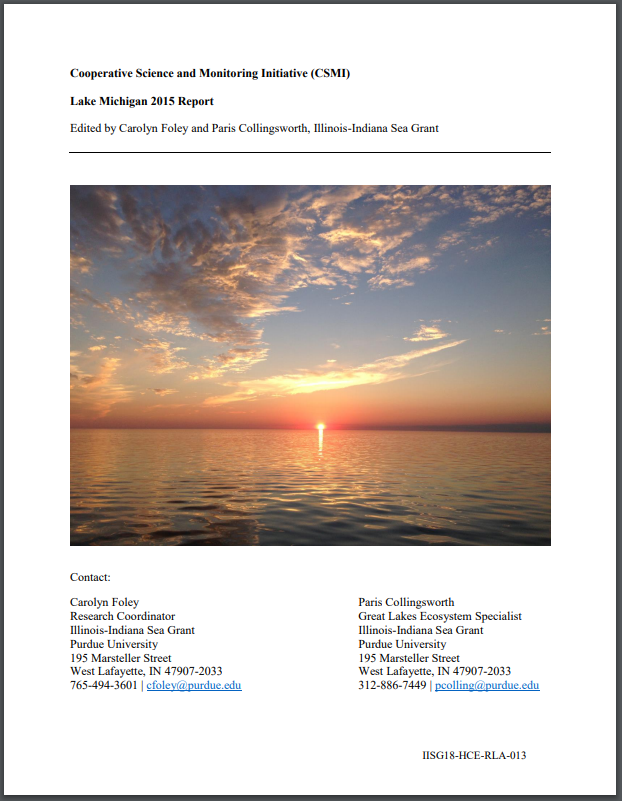
The role of the Cooperative Science and Monitoring Initiative (CSMI) is to provide enhanced monitoring and research activities that provide relevant information to address the science priorities of the Lake Partnerships (established under the Lakewide Management Annex of the 2012 Great Lakes Water Quality Agreement) across the Laurentian Great Lakes. The Lake Michigan Partnership, a collaborative team of natural resource managers led by the U.S. Environmental Protection Agency with participation from federal, state, tribal, and local governments or agencies, uses the information collected through CSMI to help develop long term ecosystem-based management strategies for protecting and restoring Lake Michigan’s water quality. On a practical level, CSMI is an intensive effort to collect information on the health of each lake, rotating to one Great Lake each year. In 2015, it was Lake Michigan’s turn. This is an executive summary of the 2015 research results and the associated white paper containing more specific information.
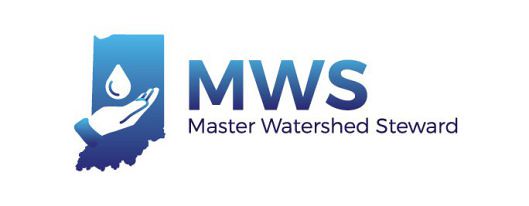
Indiana Master Watershed Stewards are trained volunteers who understand how watersheds work and are willing to help with watershed improvement efforts in their communities. Master Watershed Stewards complete a 12-week training program that pulls together information from scientists, researchers, and watershed management professionals. Topics will include how watersheds function, what factors affect watershed health, how water is managed for human use, and how volunteers can play a part in promoting watershed health and appreciation.
For more detailed information, visit Indiana Master Watershed Steward
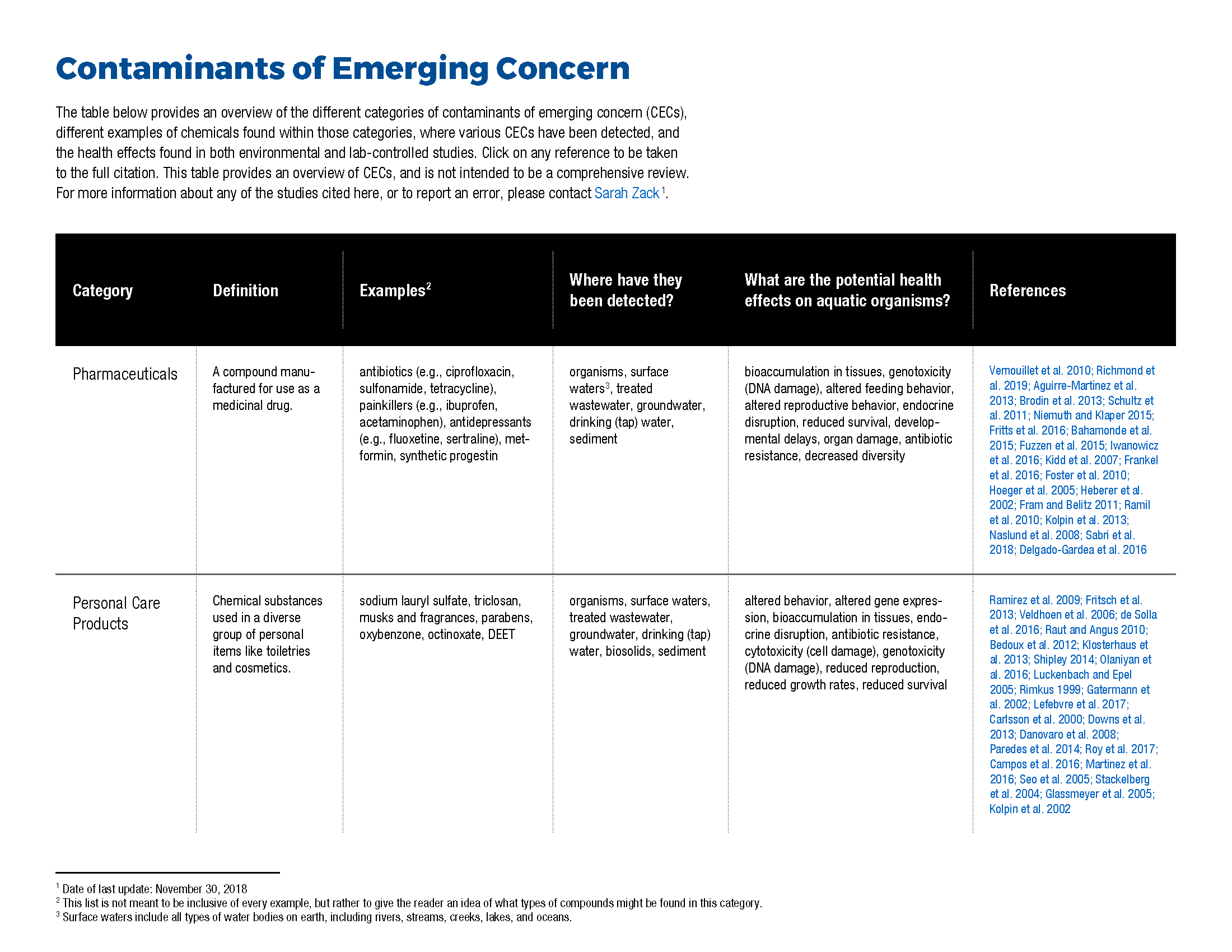
This table provides a review of the current contaminants of emerging concern (CEC) literature base. This resource provides an overview of the different categories of CECs (e.g., pharmaceuticals, microplastics, pesticides, etc.), examples of chemicals found within those categories, where various CECs have been detected, and the health effects found in both environmental and lab-controlled studies. This information is supported by an extensive list of peer reviewed publications.
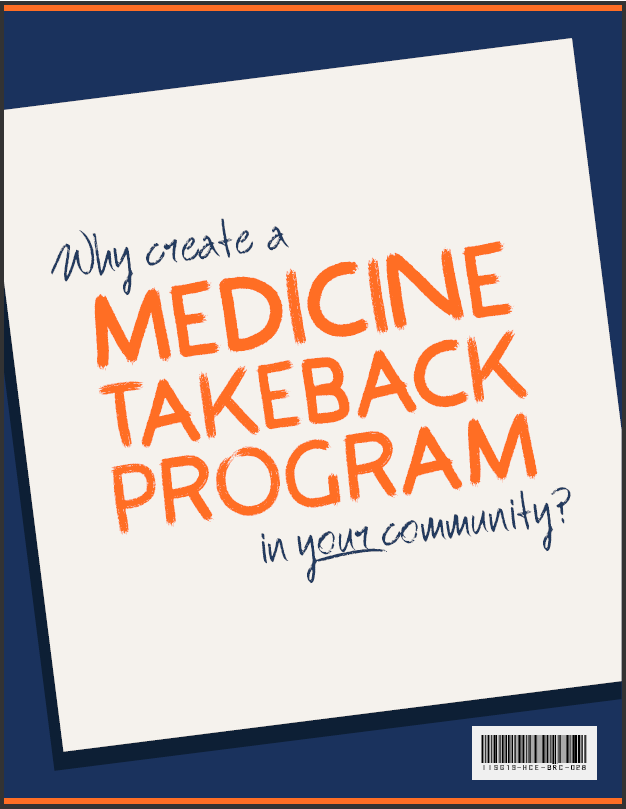
This is a fact-sheet designed to educate community members about the value and utility of unwanted medicine disposal programs.
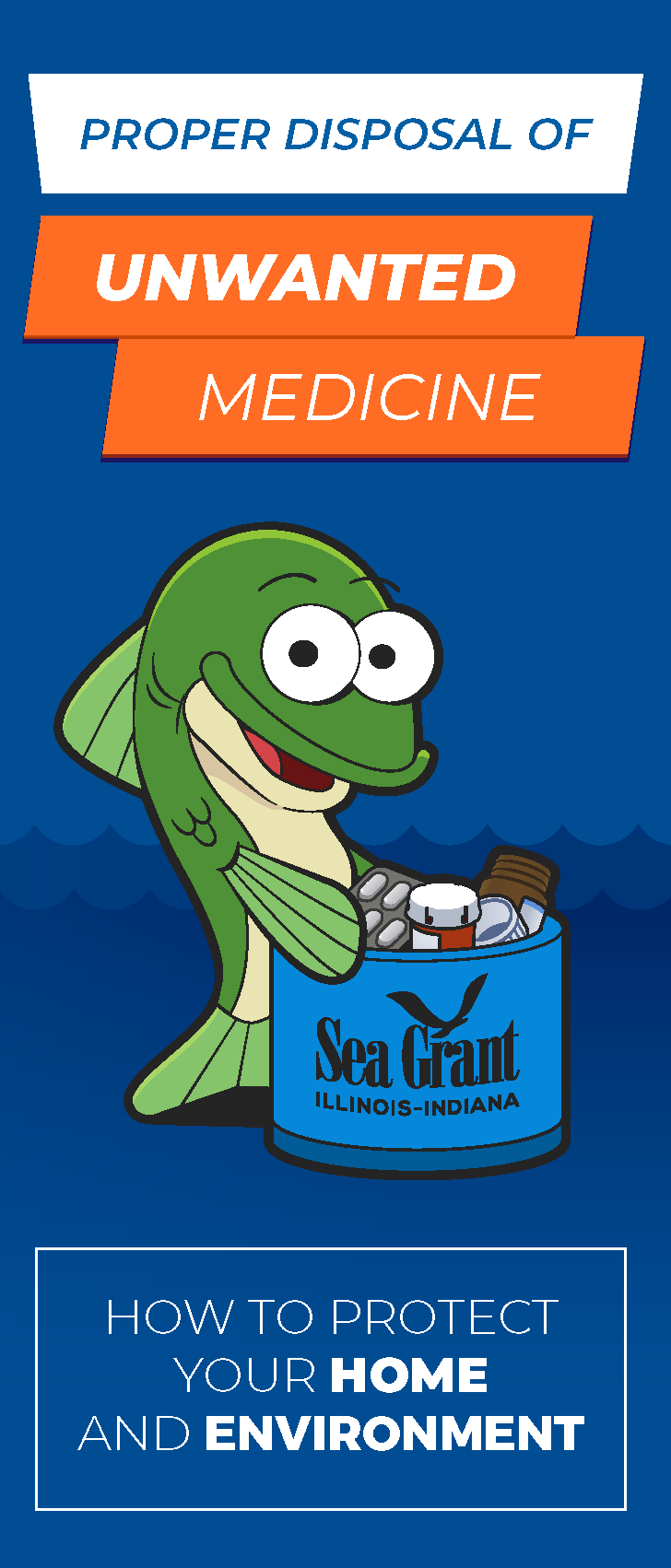
This brochure details information about the problems caused by unwanted medicine in the home and environment, and provides helpful information for how to minimize the risks it poses.
A printer friendly alternate version is available at https://iiseagrant.org/wp-content/uploads/2019/07/Unwanted-Meds_Brochure_Print_Friendly.pdf.